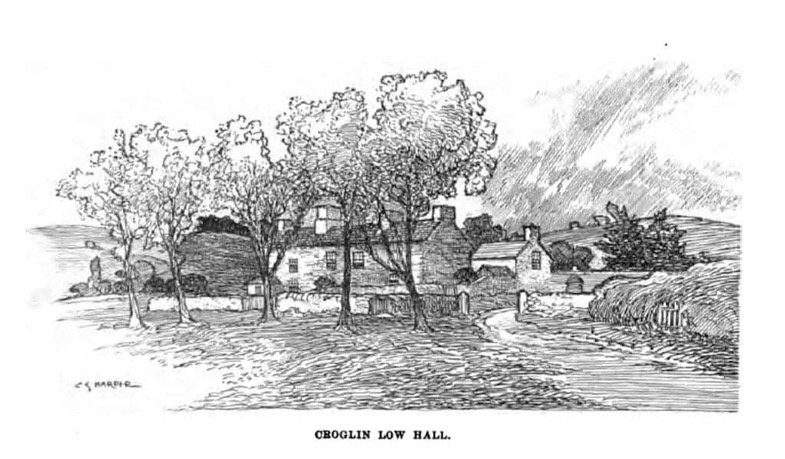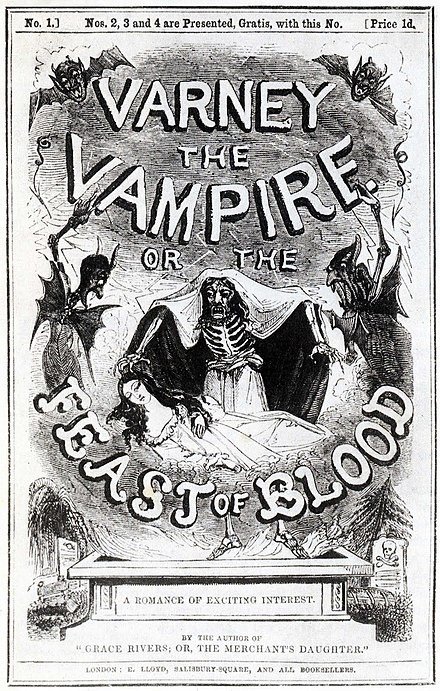1.5- The Vampire of Croglin Grange (Short)
Is it a zombie? Is it a lunatic? No, it’s the infamous vampire of Croglin Grange. In this week’s short Nikki explored the origins of this popular Cumbrian vampire tale and asks ‘is this folklore'?
Augustus Hare- The Last Victorian
Everything starts with Augustus Hare because we wouldn’t have the story of the vampire without him. Born in Rome in 1834, Hare was adopted by his maternal aunt and brought up in relative seclusion. He seemed to have had an extremely close bond with his adoptive mother and after she died, he was responsible for arranging her memoirs for publication. We won’t tell you the whole story here because Hare does it (at great length) in his autobiography ‘Story of My Life’, which runs to two books of three volumes each.
If you’re looking for the story of The Vampire of Croglin Grange then you’ll need to skip straight to the second book of his musings, which was published in 1901. Both volumes are available here at Project Gutenberg. The entry you’re looking for is dated ‘‘June 24 (or 24th June) in the At Home and Abroad volume.
This entry is the first recorded telling of the now infamous story of The Vampire of Croglin Grange. It is well worth reading in its entirety, especially in the context of the rest of Hare’s writings.
In this entry, Hare recounts with his usual bonhomie and defference to anyone with a title, a dinner given by Lord Ravenswood in Lodndon. At the dinner, the guests enter into a bit of a storytelling competition, with various members of the party telling chilling tales of death omens and hauntings to liven up what I imagine to be quite a dull evening.
Step forward one Captain Fisher, the fiance of Lord Ravenswood’s Daughter Victoria, who supposedly tells Hare the tale of The Vampire of Croglin Grange. It is a ripping yarn and extremely well remembered by Hare, especially if you considered that he was told this tale in 1874 and doesn’t write it down for his autobiography until 1900! I don’t know about you but I struggle to remember what happened last week, never mind the intricate details of a story I was told at a dinner party twenty-five years ago.
Any half-reasonable person would look at just this fact and begin to question how much of Hare’s tale is really the same as that told to him by Captain Fisher and how much is Hare simply inserting quite a good horror story into his amazingly dull autobiography to add some late Victorian gothic thrills. Since no one bothered to track down or ask Fisher about this during his lifetime, we may never know if this is the story as he told it. So instead we (like every other folk researcher for the last 120 years) will just have to look at the readily available evidencve.
Croglin High Hall or Croglin Low Hall?
One of the trickiest things about this story is that there is officially no such place as Croglin Grange. The picture above is a sketch of a farmhouse in the Eden Valley in Cumbria called Croglin Low Hall, which is the nearest the hauntologists (yes, actually a job) have come to discovering the location for this vampire story.
In the story, Hare, or Captain Fisher as the narrator, specifies a couple of things about Croglin Grange. Firstly, it has a chapel in the grounds, or at least within sight of the windows of the house. Secondly, it is only one story high. This is very important for the action of the story because I would be vampire appears to have no supernatural powers- unless you count rising from the grave and the ability to pick the lead out of window panes. So for him to access the bedroom of the poor woman he attacks, it is going to have to be on the ground floor. The story labours this point quite a lot a the beginning.
But here’s the thing. There aren’t any one story farm houses in this area of the Eden valley with attached chapels. Charles G. Harper, the expert in haunted houses, did go to the Eden Valley to see if he could find Croglin Grange. But all he found was Croglin High Hall and Croglin Low Hall, neither of which had a chapel and both of which had a second floor.
It wouldn’t be until much later that Croglin High Hall was identified as the probably location for the story. Further research in the 60’s by Francis Clive-Ross (read an account by his friend Richard Whittington-Egan here) discovered that Croglin Low Hall had been called Croglin Grange until the late 18th century
A variation on Varney
Anyone reading The Vampire of Croglin Grange for the first time might experience a certain sense of familiarity: the frightened young maiden woken from her sleep, the fiend that crawls in through the window in search of blood and ravishes of said maiden in her bed. It is a trope now so familiar to us that almost anyone would leap up and cry ‘Dracula’ just from those tiny hints.
While what I’ve just described could indeed be a description of Dracula, it could equally describe the story of The Vampire of Croglin Grange and Varney the Vampire; or The Feast of Blood. And what’s more, Varney pre-dates either Croglin or Dracula.
Originally published in 1845 as a cheap ‘penny dreadful’. The story is set in both England and Italy and tells the tale of the vampire Sir Francis Varney. Across the course of 232 chapters (and you though Augusts Hare was long winded) Varney torments maidens, drinks blood, schemes for monetary gain and eventually commits suicide by throwing himself into Mt. Vesuvius.
Like all penny dreadfuls, the story is wildly inconsistent and sensational. But it does give us our first glimpses of a Dracula like character. Varney isn’t the first vampire in English literature (that position belongs to John Polidori’s The Vampyre) but it is the first to show some of the tropes that will later become popular in vampire fiction: helpless maidens ravished, ennui with eternal life and those pointy fangs for sucking blood.
If you want to have a go at reading Varney, Project Gutenberg has all 232 chapters for you to enjoy.
A touch of Dracula
The big question remains, does Croglin owe anything to Dracula? Well, it is difficult to read Hare’s story without having flashbacks to Stoker’s masterpiece.
Published in 1897, Dracula was an instant hit but sadly made very little money for the writer because of contract issues and copyright problems. It has never been out of print since the first edition, and the characters now inhabit the public consciousness with a power that is almost supernatural.
Would Hare have been aware of Dracula? Undoubtedly. By the time Hare is revising the second volume of Story of My Life for publication in 1900, Dracula was everywhere- thousands of copies had been sold, it had been serialised in magazines and Stoker was widely talked about in literary circles.
Dracula wasn’t the first vampire tale but it is the most enduring. It entered the Western psyche, in a way few stories ever do, with a heady mix of gothic dread, modern angst and sex. If you were August Hare wouldn’t you want to borrow some of that for yourself?
If you haven’t read Dracula then there is a great hardback edition by Puffin books available here.



